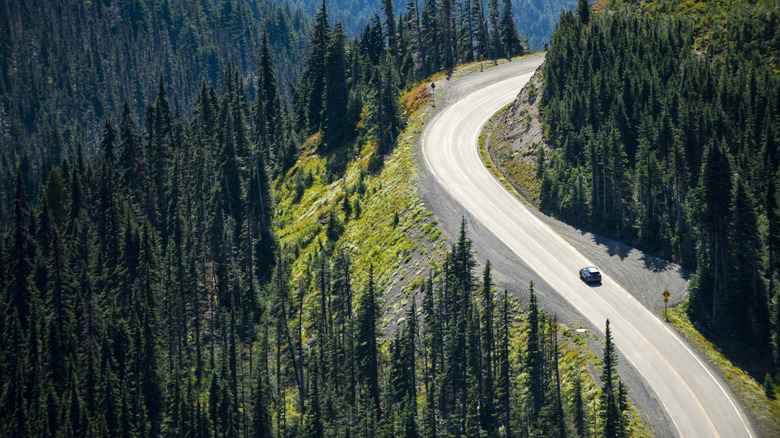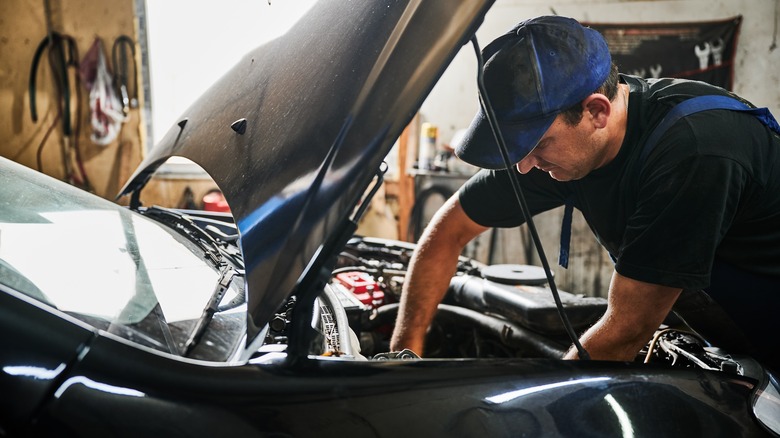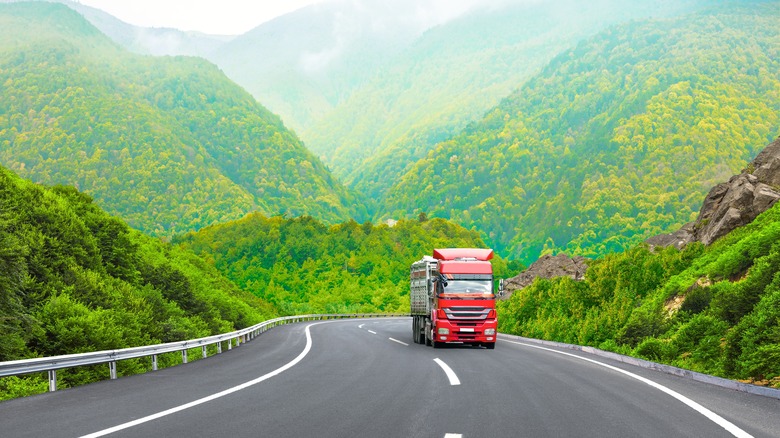Why Does Your Vehicle's Engine Lose Power In Higher Elevations?
Here's a hypothetical scenario: Let's say you've spent all your life living and driving in lowland areas, but one day, you decide to pack up and move to a town in the Colorado Rockies. When you start driving around those mountainous or hilly areas, you may suddenly find that your beloved car isn't getting the same level of performance that you were used to in your old stomping grounds. Before you assume that your car was damaged somehow in the moving process, you should instead consider the substantial change in environment you've subjected the car to.
Cars may not be living things like humans, but that doesn't mean they aren't subject to the laws of nature. A change in your car's operating environment — even a seemingly innocuous one — can have knock-on effects on its overall level of performance. In this specific scenario, the change in question is the difference between standard, lowland driving and trying to do the same up at a higher altitude. Due to the laws of nature and physics, your car won't be able to produce the same performance that you're used to, at least not without some adjustments.
Higher elevations mean less oxygen for engines to burn
The primary reason that cars lose power when operated at higher elevations is the lower concentration of oxygen molecules at higher altitudes. Have you ever gone on a long hike up a large hill or mountain, and by the time you reach the top, it seems harder to breathe than usual? That's not just a product of exhaustion — there's literally less oxygen for you to breathe the higher up you go. There's a long scientific explanation for this, but the short version is lower atmospheric pressure. The oxygen is less densely-packed, so it's harder to draw it into your lungs.
Cars obviously also need oxygen to function. Specifically, combustion engines function by drawing in oxygen from outside the car to mix with fuel and create the explosions that power the cylinders. If there's less oxygen to pull in, it becomes harder for the engine to properly fire its cylinders, which means it needs to pump harder to compensate. You need to press down harder on the pedal to open the throttle wider, which allows more oxygen to flow in. This is why you need to push your car more at higher altitudes to get the same kind of performance.
Engines can be tuned to better withstand higher altitudes
If you move from a lowland area to a highland area, you don't need to resign yourself to lousy car performance for the rest of your life. Gasoline-powered cars can be made to better handle the woes of higher elevation with a bit of mechanical tinkering. You could technically do this yourself if you're mechanically-inclined, but the best policy is to visit your local mechanic either right before or right after you visit a higher-altitude area.
There are a few tricks that a mechanic can employ to better acclimate your car to the lower oxygen density that comes with higher elevations. First, they'll perform a general inspection and tune-up to ensure the car is in good standing. Fresh spark plugs and air filters will ensure you get the best possible performance and aren't hampered further by degraded parts. Second, your engine's air-fuel mixture ratio may be adjusted to draw more air than usual into the engine, accounting for the drop in density.
Newer cars have oxygen sensors that can do this automatically. Lastly, the mechanic may raise the RPM at which your car idles. If the oxygen change causes your engine to idle too low, it may have difficulty starting up. Raising the idling RPM helps to alleviate this and keep things firing.
Diesel engines suffer less at high altitude than gas engines
There are differences in how various types of engines handle higher elevations. Specifically, you'll notice a difference in performance between a traditional gas-powered engine and a diesel engine. Diesels still suffer some performance loss at higher elevations, as they also require oxygen. However, there are a few factors that make diesel engines a little more reliable up in the hills.
For one thing, unlike gas engines, traditional diesel engines aren't throttled, so their performance stays more consistent in just about any setting. Additionally, diesel fuel and injection methods pack a bit more punch, making up at least some of the difference in performance lost to reduced oxygen density. This is one of the reasons heartier vehicles like semi-trucks use diesel engines.



